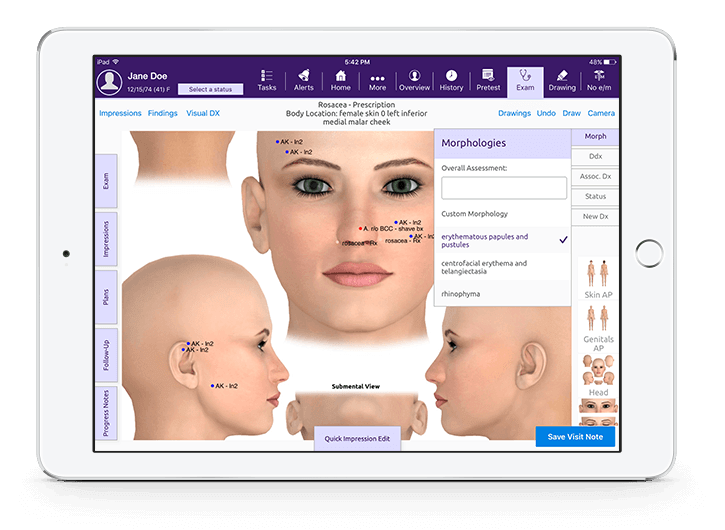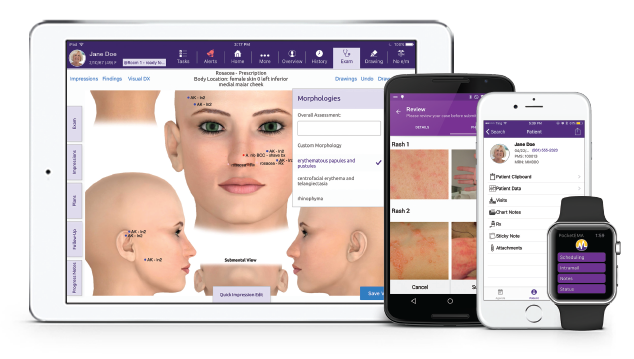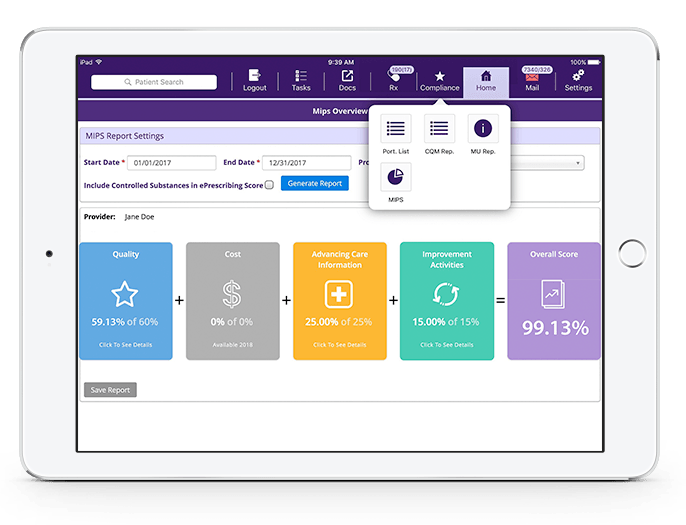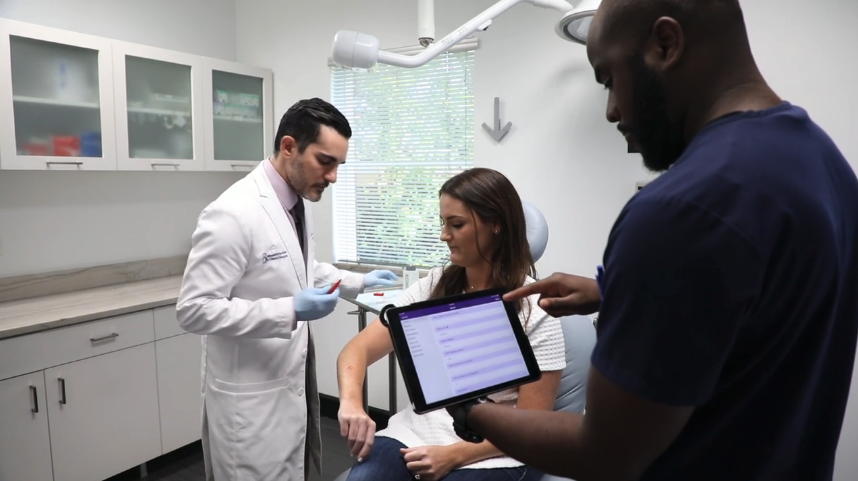2019 Top Trends in Dermatology Software

Searching for a new dermatology EHR system this year? Here’s what’s trending.
A new year often brings new trends. When it comes to healthcare technology, what hot topics do you anticipate proliferating the industry? HealthDataMangement.com shared its top 12 trends that it expects to dominate healthcare in 2019. Its list included improving the patient experience, focusing on interoperability and EHR optimization, just to name a few.
Based on my experience as both a practicing dermatologist and the senior medical directory of dermatology at Modernizing Medicine, I wanted to share some of the trends I predict to see when it comes to dermatology software in 2019.
 1. Making the switch from one dermatology EHR to another
1. Making the switch from one dermatology EHR to another
In 2019, there will be practices that switch from paper records to a dermatology EHR for the first time, and I believe that many practices already using a less than ideal EHR system, will decide the time has come to invest in new dermatology software.
If you find yourself on the fence about making a switch from one EHR system to another, I put together a list of some key signals that may indicate it’s time for a new dermatology EHR.
2. Fostering increased use of dermatology software because of value based care
With the Merit-Based Incentive Payment System (MIPS) and evolving changes to the rules, I believe that the importance of having the right technology in place will increase in value. Dermatology software, including an EHR system, should capture data needed to report for MIPS and the importance of using an ONC Certified Electronic Health Record Technology (CEHRT) for reporting will continue to increase the valuable role EHR systems play.
Dr. DeVries from Central Dermatology spoke to the benefits of our dermatology EHR’s built-in MIPS dashboard when he stated, “EMA™ has also made MIPS reporting easier to manage so I can delegate this responsibility to a staff member. With the help of EMA, I achieved a estimated MIPS score of 90 points without it being a burden or deflecting from patient care. We made the right decision to implement EMA and plan to use the EHR system for years to come.”
My advice? Look for a vendor that has the framework in place to meet current regulations and more importantly has the resources to plan and adjust accordingly to meet industry changes so you, your practice and your technology won’t be behind the curve.
 3. Seeking an all-in-one dermatology software solution
3. Seeking an all-in-one dermatology software solution
When it comes to vendors, less is more. If you can streamline and work with one vendor to provide your dermatology EHR system, practice management, billing services, analytics and patient engagement tools, you hit the health IT software vendor jackpot. An integrated dermatology software suite can help you streamline your practice and all the components will “talk” with one another. Plus, when you need additional assistance, you have one single company to contact versus managing multiple points of contact.
Dr. Jessica Kappelman shared the value that she and her practice, Kappelman Dermatology, discovered when opting for a full suite of dermatology software. “The all-in-one modmed® Dermatology suite, with EMA, dermatology Practice Management and RCM, is worth the investment to have the confidence that my business is taken care of. I trust that Modernizing Medicine is looking out for the financial health of my practice, and I have confidence that I am earning what I deserve,” stated Dr. Kappelman.
I foresee practices, especially larger or expanding groups, opting for a vendor that provides a comprehensive turnkey software suite that caters specifically to dermatology. Practices will need a solution that can scale with them.
4. Consolidation in the industry = streamlining dermatology software across multiple locations
Whether we like it or not, consolidation is happening whether it be through investors, private equity firms or the selling of private practices to conglomerates. As referenced in the January 2018 issue of Dermatology World, “Pulling Back the Curtain on Private Equity,” dermatologists account for about 1 percent of U.S. physicians, yet 15 percent of recent practice acquisitions (as viewed in 2017) by private equity firms have been dermatology related.
That being said we’ve seen that as the number of locations and offices grow under the umbrella of these larger groups, they carefully evaluate the best vendors, which include dermatology software, that will be implemented across all locations for continuity, effectiveness, training efforts and interoperability.
Take U.S. Dermatology Partners, one of our many dermatology clients that has shared its story on instituting Modernizing Medicine’s dermatology software across almost all of its 98 clinics and over 260 providers.
Sarah Nguyen, vice president of systems applications and integrations at U.S. Dermatology Partners, shared, “98 percent of our practices use EMA, as we see the value of being on the same platform and using the same EHR system across our multiple locations. For those who have been hesitant about making the switch, once they see a demo and hear about the benefits, they better understand why EMA is our preferred EHR vendor.”
As the trend in practice consolidation grows, so will the need for practices to consolidate its vendors, too.
5. An increased focus on patient engagement
As mentioned in the HealthDataMangement.com article referenced earlier in this post, the trend towards using technology to improve the patient experience will continue to have a high growth trajectory. We have realized that engaging the patient in his or her own healthcare can make for a better experience, a more invested patient, can aid in medical adherence and reduce the overall cost of healthcare. Plus, as we all (hopefully) become more inclined to use technology at various touchpoints in our day-to-day routines, the utilization of tools such as a patient kiosk, patient portals and even telehealth will continue to increase in adoption both by practices and by patients. Selecting a vendor that provides such patient engagement tools that integrate with its EHR and practice management systems can help differentiate options in the market.
6. Zeroing in on physician burnout and improving the user experience
Both physician and practice burnout are anticipated to continue to be at the forefront of conversations and will help drive health IT vendors efforts when it comes to investing in the user experience (UX). Understanding what clients need, where they face the most challenges and implementing feedback from a collective group of users to make improvements will grow in importance. In order to combat physician burnout, health IT vendors will need to work alongside the end user to help:
- Align the users’ workflow to increase clincian efficiency
- Curtail time documenting visits and more time on patient care
- Reduce information overload and alert fatigue
Modernizing Medicine’s dedicated UX department helps optimize our products for our clients. Andrew Schall, director of user experience, spoke to this and shared, “Our UX team conducts research to better understand the operations of our clients’ practices through on-site observational studies, behavioral surveys and user interviews through user-centered design practices. Usability testing helps our teams to design a more user-friendly experience before it is released to all of our users. By iterating on our designs, we’re better able to work to optimize the placement of elements on the screen and adjust the workflow to the mental model of our users. At the end of the day, we want to continually improve our solutions to help physicians and their staff focus more on patients and less on documentation.”
Additionally, we offer clients various opportunities to help shape the future our products, one of which includes our customer research panel.
I suspect all these trends will play a role in the 2019 healthcare technology landscape in varying degrees. I feel confident that the need for technology, specifically dermatology software, will only continue to increase in demand and will continue as a trend for years to come.




